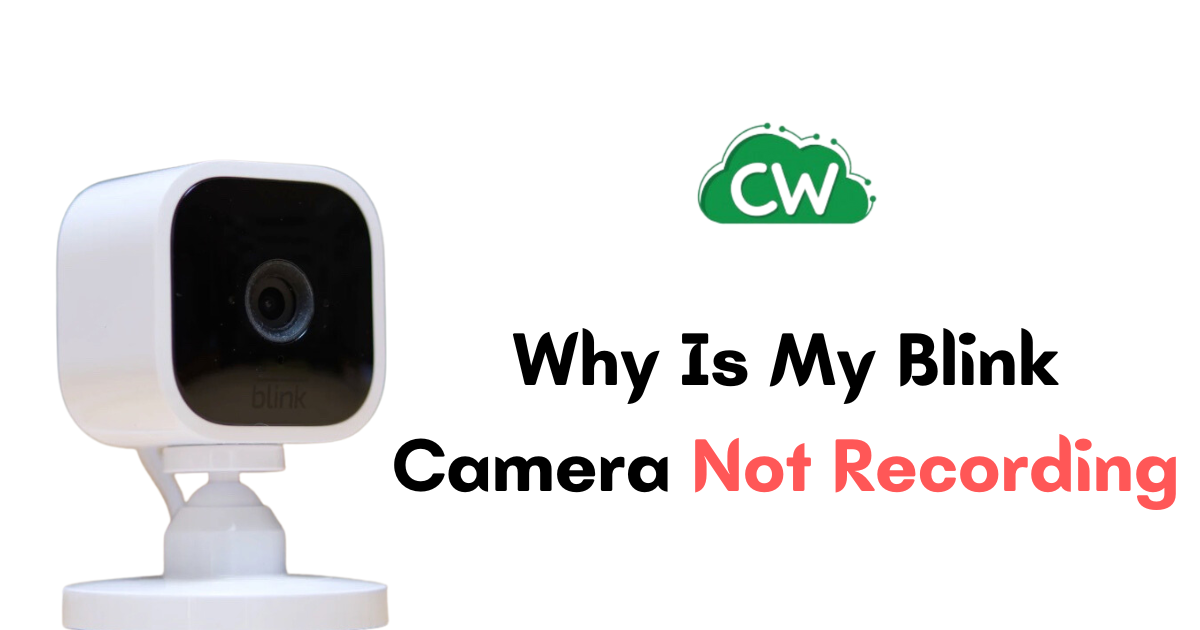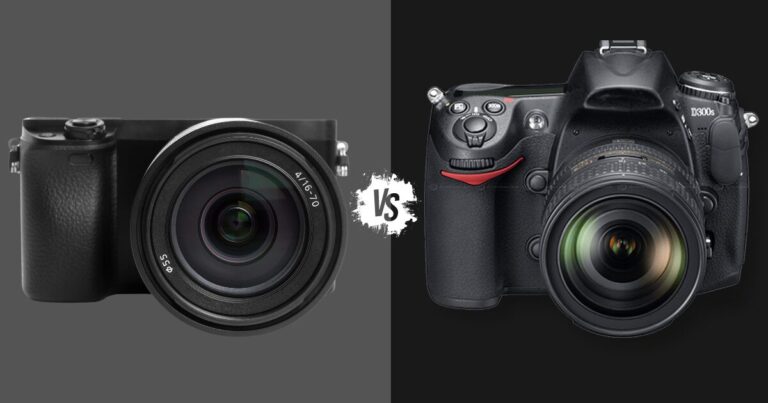Why Is My Blink Camera Not Recording? (Cause and Solutions)

If your Blink camera is not recording, it can be frustrating and leave you wondering what the problem might be.
In this article, I will provide you with some troubleshooting tips to help you get your Blink camera up and running again.
Whether it’s a network issue, improper settings, or a sync module problem, we’ll cover all the possible causes and solutions. So, let’s dive in and figure out why your Blink camera is not recording.
Common Reasons Why Your Blink Camera Isn’t Recording
If you’re facing issues with your Blink camera not recording, there are several common reasons that might be the cause. Understanding these reasons can help you troubleshoot and resolve the problem effectively.
Possible Reasons for No Recording
- The camera is disconnected from the network and offline.
- Poor network signal is not supporting camera operations.
- Improper camera settings, such as motion detection or recording not enabled.
- The Blink system is disarmed, preventing any recording.
- No active storage plan is attached to your Blink camera.
- Power supply issues like low battery or incorrect wiring can also affect recording.
Addressing these common reasons can help get your Blink camera back on track and ensure it functions properly. Let’s take a closer look at each possible cause and how to resolve it:
| Reason | Solution |
|---|---|
| The camera is disconnected from the network and offline. | Check the camera’s connection status on the Blink app and ensure it is connected to the network. |
| Poor network signal is not supporting camera operations. | Improve your network signal strength by moving the camera closer to the Wi-Fi router or using Wi-Fi extenders. |
| Improper camera settings, such as motion detection or recording not enabled. | Double-check the camera settings on the Blink app and ensure both motion detection and recording are enabled. |
| The Blink system is disarmed, preventing any recording. | Arm the Blink system through the Blink app to enable recording. |
| No active storage plan is attached to your Blink camera. | Ensure you have an active storage plan, either local or cloud-based, to store your camera recordings. |
| Power supply issues like low battery or incorrect wiring can also affect recording. | Check the battery level of your Blink camera or verify the wiring if it is connected to a power source. |
Fixing Blink Camera Not Recording Issues
If you’re facing issues with your Blink camera not recording, there are a few troubleshooting steps you can take to resolve the problem. Follow these tips to get your camera back up and running.
1. Confirm Camera Connectivity
First, it’s important to ensure that your Blink camera is online and in sync with the cloud servers. Open the Blink app on your device and check the connection status.
If the camera shows as offline, try power cycling your camera and the sync module. Power cycling involves unplugging the camera and removing the batteries for a few seconds before reconnecting them. This can help refresh the network and establish a stable connection.
2. Check Camera Settings
Double-check the camera settings to make sure that motion detection and recording are enabled. In the Blink app, navigate to the camera settings and verify that the appropriate options are turned on. Adjust the sensitivity settings as needed to capture the desired motion.
3. Verify Storage Plan
Ensure that you have an active storage plan for your Blink camera. Without a storage plan, your camera will not be able to record and save footage.
Check your subscription status and make sure that you have either a local or cloud storage plan attached to your camera.
4. Troubleshoot Sync Module
If the above steps do not resolve the issue, you can try troubleshooting the sync module. Remove the sync module from its power source and wait for a few seconds before reconnecting it.
This can help refresh the connection between the sync module and the camera. You can also perform a factory reset on the sync module as a last resort.
Keep in mind that a factory reset will erase all the previous settings, so make sure to note down any important configurations before proceeding.
By following these troubleshooting steps, you can resolve the issue of your Blink camera not recording. If you continue to experience problems, it may be helpful to reach out to Blink support for further assistance.
How to Get Your Blink Camera to Record Motion
| Steps to Get Your Blink Camera to Record Motion |
|---|
| 1. Arm the system through the Blink app. |
| 2. Enable motion detection in the camera settings. |
| 3. Adjust sensitivity settings as needed. |
| 4. Ensure a stable internet connection for recording and syncing with the Blink cloud servers. |
If you’re having trouble getting your Blink camera to record motion, there are a few important steps you need to take.
First and foremost, you need to make sure that the system is armed. Without arming the system, the camera won’t be triggered to start recording when it detects motion. So, open the Blink app and ensure that the system is armed before expecting any motion recordings.
Next, go into the camera settings and make sure that motion detection is enabled. Sometimes, the camera’s default settings may have motion detection turned off, so you’ll need to manually enable it.
Adjust the sensitivity settings as needed to ensure that the camera captures the desired movements. These settings can be found in the Blink app under the camera settings section.
Additionally, it’s crucial to have an active internet connection for your Blink camera to record and sync with the Blink cloud servers.
Without internet access, your camera won’t be able to transmit the recorded footage. So, ensure that your camera is connected to a stable Wi-Fi network and that the internet connection is working properly.
By following these steps and arming the system, enabling motion detection, and ensuring a stable internet connection, you should be able to get your Blink camera to effectively record motion events.
Troubleshooting Tips for Motion Recording Issues
If you’re facing motion recording issues with your Blink camera, there are a few troubleshooting tips you can try to resolve the problem.
Follow these steps to ensure your camera captures motion events effectively.
Check Motion Detection Zones and Sensitivity Levels
Start by reviewing the motion detection zones and sensitivity levels in the camera settings. Ensure that the zones are properly set up to cover the areas you want to monitor.
Adjust the sensitivity levels to capture the desired movements effectively without triggering false alarms.
Proper Camera Placement
The placement of the camera plays a crucial role in motion recording. Make sure the camera is positioned correctly to cover the intended areas of surveillance.
Avoid placing the camera too high or too low, as it may result in missed or irrelevant motion events. Experiment with different angles and heights to find the optimal position for your camera.
Keep Firmware Updated and Ensure Sufficient Battery Life
Regularly check for firmware updates for your Blink camera and apply them as necessary. Firmware updates often include improvements and bug fixes that can enhance motion recording performance.
Additionally, ensure that your camera has sufficient battery life to avoid any issues with motion detection and recording. Replace or recharge the batteries if necessary.
Resolving Live Recording Problems with Blink Camera
| Issue | Troubleshooting Steps |
|---|---|
| Slow connection speed | Upgrade internet plan or move camera closer to Wi-Fi router |
| Improper camera placement | Position camera strategically and avoid Wi-Fi interference |
| Outdated firmware or low battery | Regularly update firmware and maintain sufficient battery life |
If you’re encountering live recording problems with your Blink camera, there are a few troubleshooting steps you can take to address the issue.
These tips will help ensure that your camera captures live footage effectively, providing you with peace of mind and enhanced security.
Improving Connection Speed
If you experience slow connection speed during live recording, consider upgrading your internet plan or moving your Blink camera closer to the Wi-Fi router. This will help improve the signal strength and minimize any potential disruptions.
Optimizing Camera Placement
Proper camera placement plays a crucial role in ensuring smooth live recording. Make sure the camera is positioned strategically to cover the intended areas.
Avoid placing it near objects that may interfere with Wi-Fi signals, such as large metal surfaces or electrical appliances.
Keeping Firmware Updated and Battery Life
Regularly updating the camera’s firmware is important to ensure optimal performance and access to the latest features.
Additionally, make sure to keep the camera’s battery charged or use a reliable power source to avoid any interruptions in live recording.
By following these troubleshooting steps, you can resolve live recording problems with your Blink camera and enjoy seamless monitoring of your property.
FAQ about Blink Camera Recording Issues
If you’re facing recording issues with your Blink camera, you may have some questions. Here are some common FAQs to help you find the answers you need.
Is there a monthly fee for Blink cameras?
Yes, there is a fee for cloud storage and advanced features.
Can Blink cameras be hacked?
Yes, they can be vulnerable to hacking.
What is the range of Blink cameras?
The maximum motion detection range is approximately 20 feet.
If you have any other questions or concerns about Blink camera recording issues, be sure to check the Blink support website or reach out to their customer support for further assistance.





